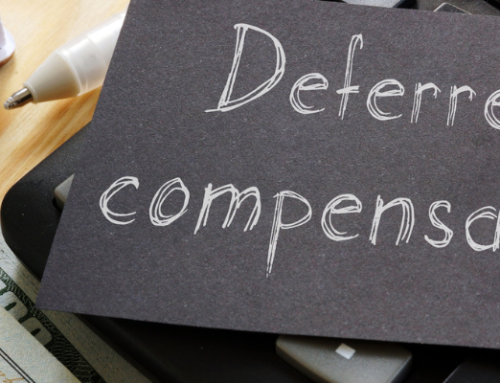We previously published a blog post “Contractors Prove Business Systems to Defense Department” that discussed the importance of compliant business systems in the proposal, negotiation and management of defense contracts. It is important for government contractors in developing their business systems and offering them up to the government as representative of their compliance with the published requirements to understand what a “system” is in the context of government compliance.
The Merriam-Webster Dictionary defines the word “system” as a regularly interacting or interdependent group of items forming a unified whole. When related to government contracting and compliance with the business system rules established in the DFARS in 2011, a “system” should be defined as a cohesive set of policies, procedures and practices designed to accomplish a common goal. It is not a compilation of disparate pieces of information, written and unwritten, developed for other purposes and not generally available as an organized guide to continued and repetitive compliant performance.
Each of the subject business systems: Accounting and Billing (DFARS 252.242-7006), Purchasing (DFARS 252.244-7001), Estimating (DFARS 252.215-7002), Government Property Management (DFARS 252.245-7003), Material Management and Accounting (DFARS 252.242-7004) and Earned Value Management (DFARS 252.234-7002) have the requirement for WRITTEN policies and procedures stating the requirements for compliance, and defining the established processes to be implemented to ensure compliance.
Policies and procedures need to be developed to support each of the identified areas of required system compliance. It is not an easy task but shows your company’s understanding of the specific compliance requirements and establishes your company’s commitment to compliant performance. Implementation of compliant business systems takes time. It is critical that you get started before your proposals or contracts require it.
Cost Accounting System Requirements
Let’s start with the basic policy and procedure requirements for a compliant cost accounting system required by DFARS 252.242-7006 and itemized on the Standard Form (SF) 1408, Preaward Survey of Prospective Contractor (Accounting System). Documentation should be prepared for each requirement below that defines what is to be done, how it is to be done, when it is to be done and who is responsible for getting it done.
- Develop guidance on the process of identifying the costs incurred between direct costs required for the contract performance and indirect costs incurred in support of all contractual/business efforts.
- Establish a process for identifying and accumulating all direct costs by contract or internal cost objective (i.e., bid and proposal efforts, independent research and development projects, etc.).
- Develop a logical and consistent process for allocating indirect costs to contracts or other internal cost objectives that provides an accurate picture of actual costs incurred.
- Ensure that all costs, direct and indirect, are recorded and accumulated under general ledger control (everything ties).
- Define a process for identifying and accounting for unallowable costs so that they, along with any directly associated costs are not included in any billing, claim or proposal to the Government.
There are more accounting system compliance requirements, but these are the basics and help provide a strong foundation for the development of a compliant cost estimating process.
Cost Estimating System Requirements
The cost estimation process should be very closely aligned with the cost accounting processes. FAR and the Cost Accounting Standards (CAS) call for consistency between estimating and accounting of costs.
A contractor’s practices used in estimating costs in pricing proposals must be consistent with practices used in accumulating costs.
A contractor’s practices used in accumulating costs must be consistent with practices used to estimate costs in pricing the related proposal.
Costs can be accumulated in greater detail than estimated or proposed, but not estimated or proposed in greater detail than accumulated.
FAR 31.201-1/FAR 31.203/CAS 401
The requirements for a compliant cost estimating system are detailed at DFARS 252.215-7002. The subject business system rule requires that the contractor’s estimating system include the following five components: (a) an organization structure; (b) established lines of authority, duties, and responsibilities; (c) internal controls and management reviews; (d) flow of work, coordination and communication; and (e) budgeting, planning, estimating methods, techniques, accumulation of historical costs and other analysis used to generate cost estimates.
While there are some seventeen detail functions required for an acceptable cost estimating system, it is important that the system provides for the use of appropriate source data, utilizes sound estimating techniques and good judgment, maintains a consistent approach, and adheres to established written policies and procedures organized and developed to define your cost estimating processes and practices.
Getting started with your cost estimating manual should feed off the foundation established in your accounting system manual. As a basic manual, you need to document the processes and practices for:
- Determining, utilizing historical data where appropriate, the types of labor, quantity of hours and materials required, and subcontract efforts to be utilized in the performance of the proposed efforts.
- Establishing the hourly labor rate for each of your required labor categories indicating the process for determining the appropriate salary and the number of hours to be utilized.
- Projecting, through an established budgeting process, the appropriate indirect cost rates applicable for the anticipated fiscal period(s) of contract performance.
- Obtaining and verifying the reasonableness of required materials and subcontract costs.
- Defining the established processes and practices for detecting and timely correction of errors and the protection against cost duplications and omissions.
An estimating system manual is acceptable when it provides the potential customer with documentation that accurately describes the policies, procedures and practices used in preparing cost proposals and provides sufficient detail for your potential customers to make an informed judgment regarding the acceptability of your estimating practices and the resulting proposed costs as a basis of price negotiation.
This suggested documentation for your accounting and estimating systems will not assure complete compliance, but will provide an attainable starting point from which you can develop fully compliant business systems.
Have a question related to your specific situation? Contact a member of the PBMares Government Contracting Team.





